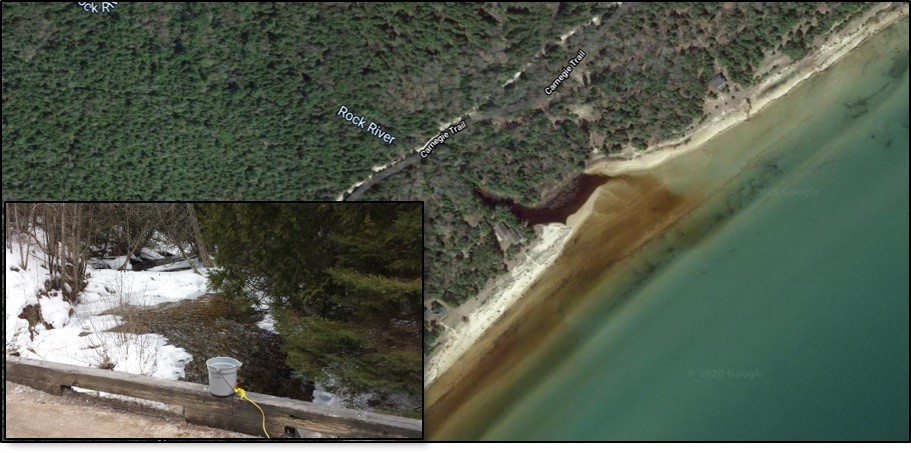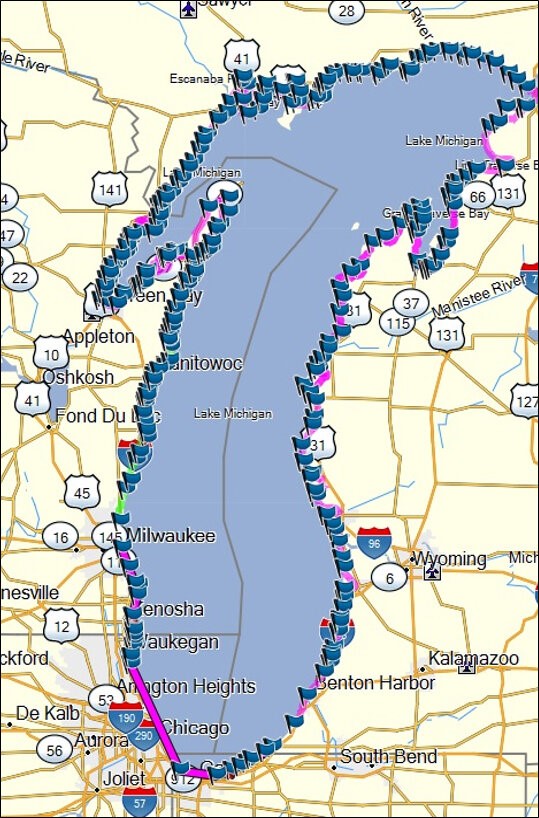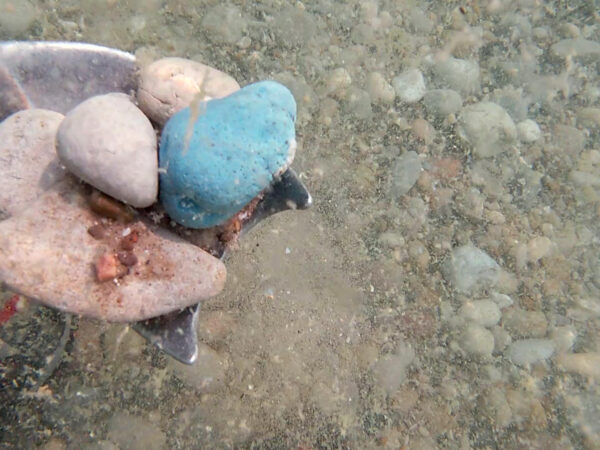
Even casual observers of Great Lakes issues are aware of the problems associated with algal blooms.
Perhaps they remember the headlines from August 2014 when Toledo went without drinking water for three days due to the threat of toxic blooms contaminating the city’s water supply. Or a day their favorite beach posted “No Swimming” signs because of toxic algal bloom threats.
The primary source for Lake Erie’s algal problems is nutrient runoff from farms that flow to the lake via the Maumee River.
But nutrient pollution from big rivers like the Maumee and the Fox River, which empties into Green Bay, have been well studied and aren’t what interested a group of University of Wisconsin researchers.

University of Wisconsin researcher Rob Mooney (Photo courtesy of Rob Mooney)
Instead the scientists, led by graduate student Robert Mooney, were thinking of small streams, specifically streams that empty into Lake Michigan.
While the large tributaries get lots of attention from researchers and regulatory agencies, the Wisconsin team found that small streams were largely passed over despite playing a large role in feeding algal blooms and in nearshore water quality.
“Decades of monitoring and regulatory efforts have paid little attention to small tributaries of large water bodies, despite their ubiquity and potential local importance,” the researchers wrote on their findings published in the Proceedings of the National Academy of Sciences.

GPS graphic of Lake Michigan small stream sampling research. Each flag represents a sampling site. (Image courtesy of Rob Mooney)
Mooney’s research began in 2018 and by the time it was completed involved multiple driving trips around Lake Michigan, stopping at as many streams as possible to take samples. At the end of the most recent six-day trip, Mooney had samples from 235 streams that flow to the big lake.
The research found that small streams tend to have nutrient loads that are high for their size and the outflow stays close to the shore. Nearshore is where most people experience a Great Lake.
The source of the nutrients based on previous research, Mooney said, is from agricultural production. “In general, streams with a high level of agricultural land in their watershed had high levels of nutrients,” Mooney told Great Lakes Now in an email.
Mooney recommended that regulatory agencies with responsibility for small streams increase their monitoring and make it more consistent. He acknowledged that it’s a challenge considering the “massive number of tributaries that enter these lakes because it would take a lot of work and cost a lot of money.”
Same rules, different priorities
Stream-regulating agencies in Michigan and Wisconsin told Great Lakes Now that streams come under the same regulations as larger tributaries. But they acknowledged that the larger water bodies tend to be a priority.
In Michigan, small-stream monitoring is the responsibility of the Department of Environment, Great Lakes, and Energy, and they are monitored and assessed on a rotating five-year plan to determine impairments, spokesperson Nick Assendelft told Great Lakes Now.
“Small tributaries are subject to the same water quality regulations as large tributaries,” Assendelft said but added that “it’s more likely that a focus is given to large tributaries with the most substantial nutrient loads.
EGLE also has a program that funds development and implementation of watershed management plans for small, direct-discharging watersheds, according to Assendelft.
Wisconsin does not implement regulations differently for small streams, the Department of Natural Resources’ Madeline Magee told Great Lakes Now. Magee is responsible for monitoring the Great Lakes and Mississippi River.
Magee said the DNR understands that small streams can have a significant impact at the local level, which is why the agency is expanding its efforts to address nutrient inputs from small streams to Lake Michigan.
Beyond regulations, Magee said the agency works with responsible parties at the county, state and federal levels to implement watershed-wide conservation practices.
A byproduct of multiple trips around Lake Michigan for Mooney was his interaction with the people in communities where he was sampling the water.
“Most of the people I talked with on the sampling trip were very interested in the work that we are doing,” Mooney said, and they were aware of the negative effects that the pollutants from the streams can have on the nearshore areas.
“It was always interesting to hear homeowners and beach and park users mention small algal blooms in the summer along short stretches of coastline, and it’s likely that some of those smaller tributaries contribute to those blooms,” Mooney said.
Catch up with more news on Great Lakes Now:
Lingering Chemicals: Legacy pollutants continue to haunt the Great Lakes
The Age of Nature: Series finale ends with hope
Great Lakes Moment: Sacred land of the Wyandot of Anderdon Nation
Fall Brawl: Sheffield Lake fishing derby inspires intense angling
Dave Spangler: Lake Erie loses tireless full-time advocate
API key not valid. Please pass a valid API key.Featured image: Satellite view of stream flowing to Lake Michigan with inset of a sampling bucket on overpass at the same site. (Image courtesy of Rob Mooney)
1 Comment
-
Gary, thank you and your team for your efforts. The Great Lakes are a treasure that can not be overlooked.




